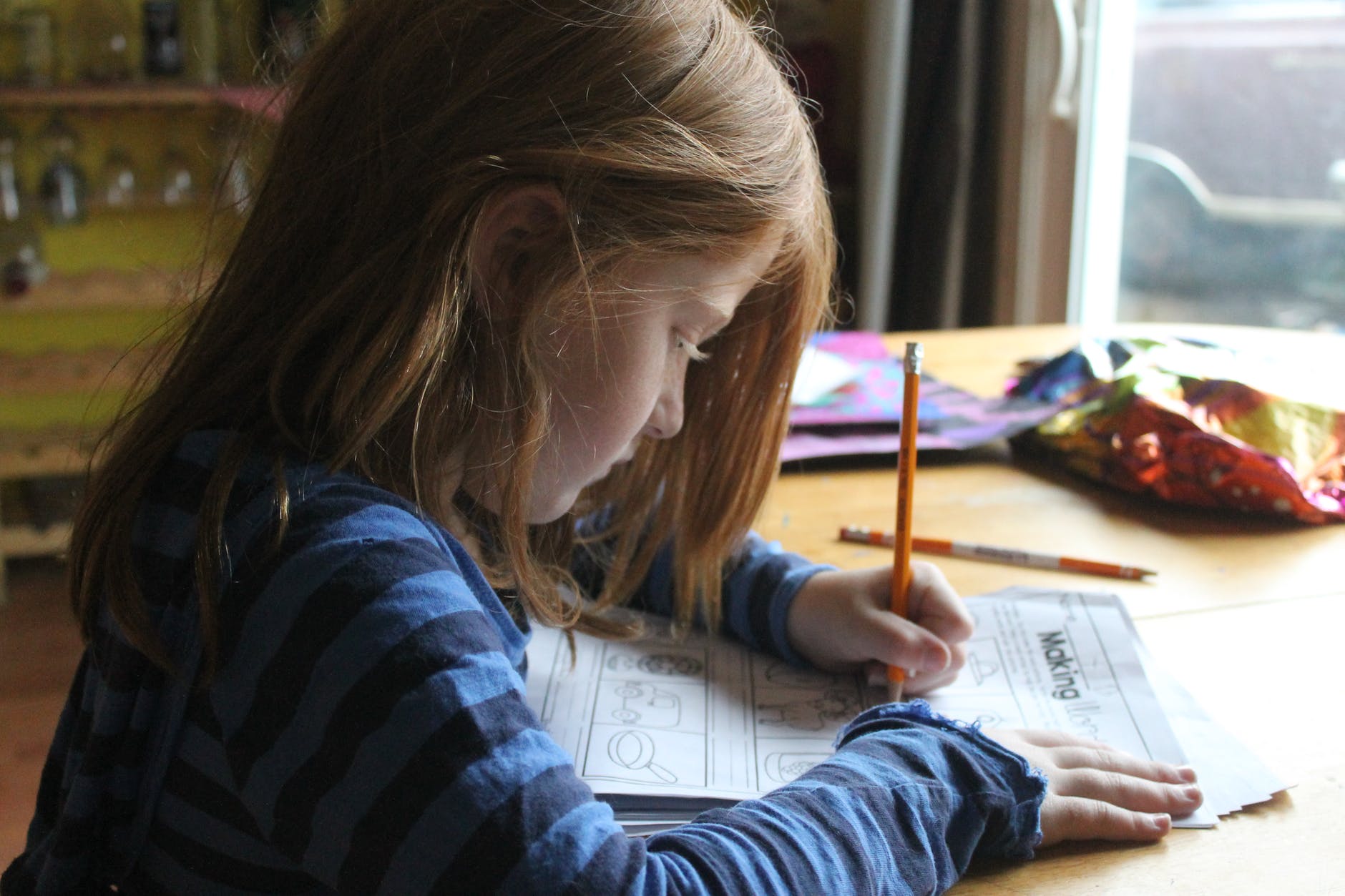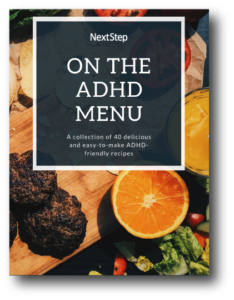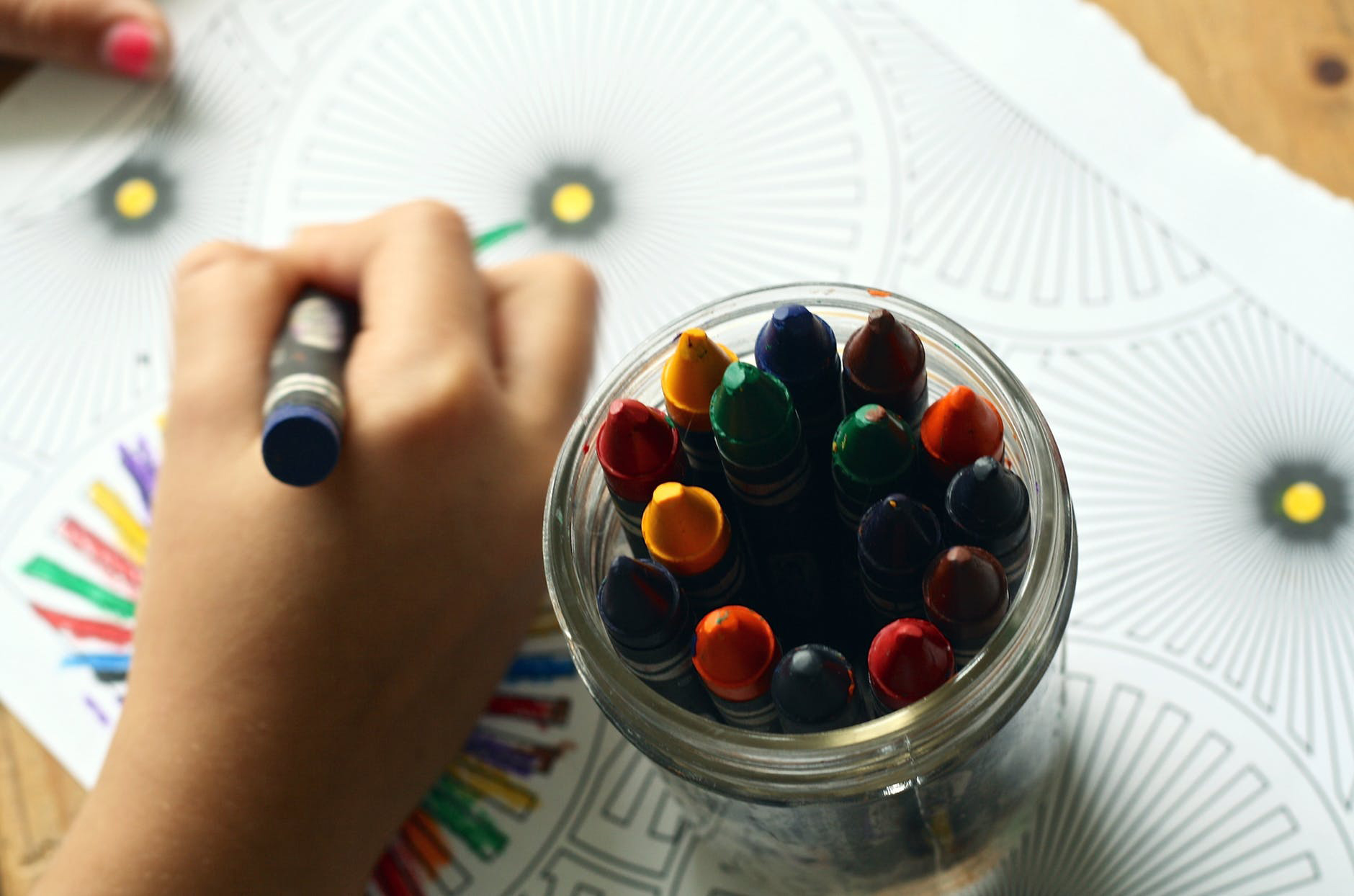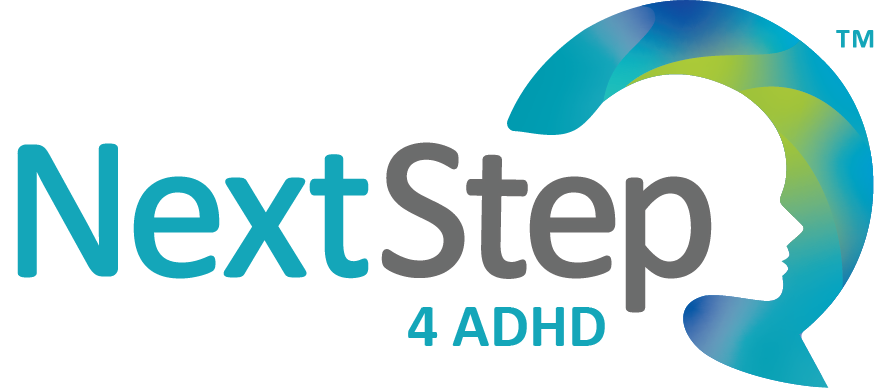
5 Art-Based Activities to Keep Hyperactive Kids Busy
Are you feeling stuck in a rut creating fun activities to keep your kids busy? Try an art project! Art can be a great way to occupy your kids, and it provides so many benefits to your children. Creating art boosts confidence, stretches the imagination, and — for children with ADHD — it can increase attentional abilities.
In this post, we’ll cover:
- The benefits of art at home
- Tips for success
- 5 easy art activities to keep hyperactive kids busy
Benefits of Art at Home
There’s no denying that art is a great way for humans — no matter the age — to express emotions. Art is a particularly good outlet for expressing difficult emotions such as anger, frustration, sadness, and anxiety. While creating art, children can work through difficult emotions, reduce their stress levels, increase self-confidence, and even strengthen problem-solving skills.
Tips for a Successful Art Session
You’re busy working from home, you’re trying to homeschool your child… is art really the best option? While some art projects are labor intensive, require a lot of adult supervision, and are oh-so-messy, there are plenty of easy art projects that your kids will love.
To make the most out of your art session, keep these tips in mind:
- Focus on the process rather than the product: The goal isn’t to make the next museum-worthy masterpiece. It’s all about the journey. Your child might love the sensory process of using art. Even just scribbling with a crayon on paper can be therapeutic. Encourage your child to concentrate on what it feels like to color, draw, etc.
- Talk about it: Ask your child about his or her artwork. Avoid criticizing the piece. Try asking “What’s happening in this picture?”
- Explore feelings: If your child isn’t happy with his end result — or if he becomes frustrated — create an opportunity for problem solving. Ask “What would you do differently next time?”
- Use a timer: Timers can be a helpful way to helps kids learn to manage time. It prevents children from rushing through projects or losing track of time.
- Start simple: If you’re not used to trying at home, it’s best to start simple. Avoid projects with too many steps. You can even run a Google search for “crafts for [insert your child’s age].”
5 Art Projects to Keep Hyperactive Kids Busy
Ready to try some art? Remember, you can also just color. Coloring is relaxing and it’s calming for both adults and children.
1. Create a Mandala
A mandala — which means “circle” in Sanskirt — is a great introduction to art at home. At it’s most basic, a mandala is a circle with geometric shapes inside.
To make a beginner mandala, follow the step-by-step guide. Once your child has drawn his or her pattern, spend time coloring each geometric shape, using crayons, colored pencils, or markers.
Drawing and coloring a mandala providers many benefits for children with ADHD. This type of coloring can be very therapeutic, but it’s also a confidence booster to create the pattern.
According to a study published in the Journal of the American Art Therapy Association, drawing mandalas can reduce impulsivity and settle hyperactivity in children with ADHD.”
2. Scribbles
Don’t underestimate the power of a scribble! Give your child clean sheets of paper and drawing utensils (crayons, etc). Allow him or her to create scribbles, and when the paper is full, simply flip it over and decorate the second side. For younger children, ask them about the designs. Try asking, “Tell me about your picture. What did you create?”
3. Ripped Paper Collage
Older children may sense the tension or increased stress levels during the pandemic. If you sense that your child is anxious, have him or her draw his worries. This is a good opportunity to discuss any feelings he or she is having. When talking about the pandemic, it’s okay to answer your child’s questions, but use age-appropriate phrases to help reduce stress.
To create a ripped paper collage,
- Ask your child to rip up the paper (the one where he drew his worries)
- Tape or glue the pieces onto a second piece of paper
- Ask your child to create a second collage of something that makes him or her happy
Tip: If you or your child is having a hard time with anxiety or intense worries, we also offer telehealth sessions for children and adults.
4. Springtime Snowmen
For children who love sensory experiences, a springtime snowman might be the perfect afternoon activity.
- Choose your medium: PlayDough, kinetic sand, etc
- Lay wax paper over the play area to help keep it tidy
- Ask your child to make a snowman
- Make a hat, scarf, buttons with clay
Your child might just enjoy squishing the kinetic sand or making the balls, and that’s okay too!
5. Try Crochet
If you have an older child, crochet can be a great outlet for busy hands. According to a research from Dr. Pippa Burns with the University of Wollongong Australia , crochet has a tremendous impact on mental health. Crochet (and knitting) can promote:
- Calmness
- Happiness
- Improved memory
- Improved concentration
More Resources for Home Learning with an ADHD Child
As you continue to work at home and teach your children, we are here to support you. Remember, it’s normal for kids to feel scared or apprehensive about current events. We have created several resources and programs to help you create calm learning environments so your children can thrive at home.
- 9 Parenting Tips to Survive Isolation with Your Kids (and Maybe Enjoy It)
- 8 Tips to Help Your Child with ADHD Thrive with E-Learning
- Surviving Online Learning: A Guide for Parents + Free Printables
Questions? We’re Just a Call or Click Away
At NextStep 4 ADHD, we’re happy to provide comprehensive care for ADHD — for you and your children. If your child has ADHD, we don’t want him or her to miss out on valuable sessions. Whether you’re interested in receiving a diagnosis, therapy for your child, or other services, we are here to make sure your telehealth experience is successful. Give us a call or send us a message to request more information.
Don’t forget to sign up for our free newsletter so you can stay up-to-date with the latest news, free ADHD resources, and upcoming events!
Learn More
What’s Sleep Hygiene? (Plus, A Guided Meditation to Help You Relax)
Sleep is one of the most basic needs of humans, and getting quality sleep is essential for your mental and physical well-being. But how often do you get less-than-stellar sleep? When you’re running a busy house, it’s tempting to skimp on your sleep so you can conquer your to-do list, but sleep is a big priority for adults and children alike. If you wake up and are already counting down the seconds until bedtime, that’s a clear sign your body is screaming for more Zzz’s.
So how do you get the quality and quantity of sleep that your body deserves? By practicing sleep hygiene!
The Link Between Sleep and ADHD
The link between sleep and ADHD goes both directions. ADHD affects your ability to get quality sleep and a lack of quality sleep can exacerbate your ADHD symptoms.
The majority of people living with ADHD tend to have at least one of the following sleep-related problems:
- Difficulty falling asleep
- Feeling more alert and energized after dark
- Going to bed very late
- Difficulty relaxing (especially if you were hyperfocused on a task before bed)
- Difficulty awakening (regardless of how much you actually slept)
- Sleeping too much and still feeling tired
The above difficulties can impact ADHD in many ways. Not only do you feel tired (hello, brain fog!), sleep deprivation can diminish the effectiveness of ADHD medications! In addition a lack of sleep affects your physical and mental well-being. Lack of sleep:
- Weakens the immune system
- Diminishes working memory
- Makes it harder to concentrate
- Decreases creative problem solving
- Accelerates aging
- Affects academic and work functioning
- Lowers metabolism, increases appetite, and may even contribute to weight gain
- Increases irritability
ADHD symptoms — including hyperactivity, impulsivity, inattentiveness — may be exacerbated without enough sleep.
What Is Sleep Hygiene?
Sleep hygiene refers to both behavioral and environmental practices that promote good sleep. The term was originally coined in the 1970’s by experts treating insomnia, but the reality is that good sleep hygiene is essential for everyone. Good sleep hygiene helps you get the sleep you need.
16 Strategies to Combat Sleep Deprivation
- UNPLUG. Avoid TV and any technology 1 hour before bed
- Schedule relaxation time before bed
- Dim lights 1 hour before bed (and avoid all “blue lights” during this time as well)
- Try relaxation exercises or deep breathing
- Take a warm bath before bed
- Adjust your thermostat — cooler rooms enhance sleep quality so aim for 60-67 degrees Fahrenheit
- Keep your room as dark as possible during sleep
- Use a white noise/sound machine or an app for sleep sounds
- Gradually increase the amount of time you sleep, in 15 minute increments
- Start your bedtime routine earlier
- Keep a book by your nightstand
- Establish a consistent sleep schedule and try to head to bed at the same time every night
- Take a moment to imagine exactly what tomorrow will be like if you stay up too late
- Eliminate daytime naps
- Avoid caffeine at least 4 hours before bedtime
- Exercise helps you sleep better but avoid working out immediately before bed
These tips work well for children too. You can read more about children’s bedtime routines here.
Meditation and Relaxation
Have you ever laid awake at night with your thoughts racing? You’re not alone! It is nearly impossible to fall asleep with your mind racing.
A quiet mind can do wonders for sleep.
When it comes to practicing meditations or mindfulness, start small; consider a 1-minute meditation or mindfulness practice. You can also practice relaxation breathing:
- Take a deep breath in through your nose.
- Slowly exhale through your mouth.
- Practice throughout the day to create calm, and even in bed.
Try Progressive Muscle Relaxation:
How Can We Help You?
Take your self-care strategies to the next level with coaching. At NextStep 4 ADHD, we’re happy to provide 1:1 coaching for ADHD. If you’re struggling to eat a well-balanced diet or find the motivation to exercise, we offer online ADHD coaching via Zoom. Call 502-907-5908 or send us a message to request more information.
Don’t forget to sign up for our free newsletter so you can stay up-to-date with the latest news, free ADHD resources, and gain access to special events and more!
Learn More
7 Tips for Creating a Homework Station for Your Child with ADHD + Printable Homeschool Schedules
By now, we’ve had a few weeks to get used to working and schooling at home. There’s no denying that this has been a big change for families — adults and children alike. Here at Next Step 4 ADHD, we want to help you continue to thrive. Children with ADHD may have unique struggles during school, but creating a homework station can help set the stage for success.
In this post, we’ll cover:
- 7 tips for creating the ultimate homework station
- Where to find your free printable homeschool schedule template packet
- How we can help you through this process
How to Create a Homework Station
Are you struggling to create a homework station that’s just right? Here are seven tips to take your homework station to the next level.
1. Involve Your Child
It’s not too late to make changes to your child’s homework station. Involve your child in the process. Ask your child where he feels like he works best. Not only can he or she help choose the location, but your child can also help decorate the area too.
Some location ideas include the dining room table, kitchen table, a desk in the den, or a lap desk set up in the living room.
2. Stock the Homework Station
A good homework station has everything your child needs to work. This includes extra pencils, erasers, and school books. Stocking the homework station prevents unnecessary interruptions. Getting up to constantly get another pencil or eraser from another room can add a lot of time to the school day and interrupt the flow of work.
3. Create Clear Break Times
Use a timer to indicate when breaks start and stop. This helps your child identify “work time” versus “break time.” In addition to using a timer to indicate the start of a break, make sure your child knows what you expect of him or her. For example, work with your child to set clear completion goals.
You might say:
- “After you complete these 20 reading comprehension questions, you may take a 10 minute break.”
- “After you read one chapter in this book, you may take a 10 minute break.”
No matter how you structure the break, make sure the goals are clear to your child.
4. Minimize Distractions
When you create a work station for your child, it’s important to remove items that are distracting to your child. This includes:
- Toys
- TV
- Access to social media (through a tablet, etc.)
- Alexa or other smart devices
5. Find Strategies that Increase Focus
Many children with ADHD may struggle to focus on their schoolwork, but there are many different strategies that can help boost focus. This includes:
- White noise machines (to drown out noises around the house)
- Music (with or without words)
- Fidget toys or fidget strings
Not all children respond the same way. Some children may love the music while others may not. Try a few strategies and discover what works for your child.
6. Experiment with Movement
Does your child like to stand or even walk around while studying? Some children thrive with a little movement! While being quizzed (or studying for a quiz) or working on memorization, some children like to pace, walk around, or simply stand up.
Try a little movement and see how your child responds.
7. Focus on the Positives
When you create a work station for your child, remember to focus on the positives! If something isn’t working — perhaps the first location was too busy — make a few adjustments and try again.
Some positive behavior to look for include:
• Following directions
• Staying on task
• Completing homework assignments
• Working quietly
Download Our Free Homeschool Schedule Template Packet
As you embark on your online journey with your kids, don’t forget to download our Home School Schedule Template Packet.
What’s in the bundle?
Included in the Home School Schedule Template bundle are printable checklists and schedules.
- Daily Routines and Schedules: The template pack incudes a daily routine chart that can be divided into sections based on activity or topic. Additional daily schedules for the morning, afternoon, and evening allows you to define expectations with your child so you are both on the same page throughout the day.
- Checklist and To-Dos: Not sure what a home school center should look like? Don’t worry, the packet includes a checklist of needed items and helpful tips for setup.
- Task List: Children with ADHD can easily become overwhelmed with complex projects or prioritizing a long list of to-dos. Use this form to help eliminate anxiety so that your child feels confident on how to start a project or prioritize their day.
Questions? We’re Just a Call or Click Away
At NextStep 4 ADHD, we’re happy to provide comprehensive care for ADHD — for you and your children. If your child has ADHD, we are happy to help you get the resources and education you need to make the your child’s school environment a successful one. Whether you’re interested in online 1:1 coaching, therapy for your child, or other services, we are here to guide you with your next steps. Give us a call or schedule your virtual appointment today.
Don’t forget to subscribe to our free newsletter so you can stay up-to-date with the latest news, events, and ADHD resources!
Learn More
5 Tips for Preparing Your Child for a Telemedicine Visit
In an effort to flatten the curve and reduce the transmission of COVID-19, healthcare professionals across the country are relying more heavily on telehealth. Here at Next Step 4 ADHD, we are proud to offer a variety of services through telehealth – and not just for adults. Children with ADHD don’t have to miss their sessions due to social isolation.
If your child has experience with FaceTime or Skype, he already has a good idea of what a telehealth session is like. Still, the idea of a virtual appointment can be intimidating for some children. If your child is scheduled for an upcoming virtual appointment, it’s a good idea to prepare your child ahead of time.
How to Have a Successful Telehealth Sessions
Here are 5 tips to make the transition from in-person visits to online sessions as seamless as possible.
1. Know what type of session your child is having
At Next Step 4 ADHD, your child can receive a variety of services remotely. This includes:
- New patient diagnosis
- ADHD screenings
- Medication management
- Talk therapy
- CBT
- Coaching
- Education
- Support
When you know what type of service your child is receiving, it’s easier to answer his or her questions.
Reminder: Telehealth sessions are for non-life-threatening visits. If your child is experiencing a serious mental health crisis or another emergency, call 9-1-1 or visit the closest emergency room.
2. Gather important information before the session starts
Before your appointment begins, make sure you have:
- A list of your children’s current medications
- Your child’s medical history, including allergies, weight, and any previous diagnoses
- A list of questions that your child has (if any)
Depending on what type of session your child is having, you might want to write down a list of concerning symptoms that you want to address. Be prepared to answer a variety of questions, including how the symptoms have been occurring, when the symptoms are most severe, and any other related details.
3. Find the perfect location
This is one of the most important steps to having a successful telehealth session. The ideal location is quiet, well-lit, and free from distractions. Consider setting up on the dining room table or in a den. The camera should be eye-level for your child.
If you have pets or other children, make sure they are situated elsewhere so you can focus on the session too.
4. Start with an introduction
You might have a telehealth session with a therapist or pediatrician that you’ve seen dozens of times. But if your child is seeing a new provider, you’ll start with introductions. Let your child know ahead of time if he’ll be meeting a new doctor so he can prepare mentally for the meeting. During the meeting, one of our providers will start by sharing his or her name and title. At this time, encourage your child to introduce himself too! After your child introduces himself, you’ll be asked to confirm a few details too. You’ll already have completed a treatment consent form, but you’ll still confirm your child’s name, date of birth, etc.
Tip: If your child is nervous (which is normal!), practice introductions beforehand!
5. Know your next steps
Before your child’s telehealth session ends, make sure you understand the provider’s diagnosis, instructions, and/or advice. Keep a notepad handy so you can take notes during the session, if needed. Don’t hesitate to ask for clarification! We want to make sure your session is valuable and helpful.
Remember… We Are Here for You Too!
Working at home and doing school work at home is new to many families. During this adjustment period, it’s normal for kids to feel scared or nervous. Let your child know that we are here to help! We have created several resources and programs to help parents create learning environments at home.
- 9 Parenting Tips to Survive Isolation with Your Kids (and Maybe Enjoy It)
- Establishing a Home School Schedule for Your ADHD Child with Next Step Pediatrician Dr. Kristi Briscoe
- Motivating Your ADHD Child to Work Independently
- 8 Tips to Help Your Child with ADHD Thrive with E-Learning
- Surviving Online Learning: A Guide for Parents + Free Printables
Questions? We’re Just a Call or Click Away
At NextStep 4 ADHD, we’re happy to provide comprehensive care for ADHD — for you and your children. If your child has ADHD, we don’t want him or her to miss out on valuable sessions. Whether you’re interested in receiving a diagnosis, therapy for your child, or other services, we are here to make sure your telehealth experience is successful. Give us a call or send us a message to request more information.
Don’t forget to sign up for a membership so you can stay up-to-date with the latest news!
Learn More
Social Distancing & Exercise: The New Normal
Most of us feel like our worlds have changed. We’re working from home — if we even still have a job. Our kids are out of school and home with us all day long. They miss their friends, and we’re missing ours as well. We don’t leave home except for the most essential outings to the grocery store or doctor’s office. A trip to the gym is definitely out of the question. Our daily routines have been turned upside down, no doubt. These are challenging times for everyone, but the ADHD mind may struggle even more to cope with social isolation, boredom, and anxiety.
How do we stay sane, let alone healthy?
What if I told you there was a magical potion that could boost your immune system, calm your mind, strengthen your heart, improve your sleep, increase your energy, put you in a better mood, and even entertain your kids? Well, there is – and it’s the magic of PHYSICAL ACTIVITY! Before you groan and continue scrolling, consider this: Exercise does not need to be a drudgery. You can work it into the busiest of days, and you can make it fun!
And couldn’t we all use a little fun right now?
Fitting Fitness into Your Life
Here are 16 great strategies for incorporating movement into your life:
Move It!
- Incorporate short bursts of exercise. Even 5 minutes here and there can increase your energy level, improve concentration, and brighten your mood.
- Stretch daily. Gently stretching on a regular basis helps to ease tension, improve bodily comfort, and enhance relaxation and general wellbeing.
- Move regularly. When sitting for long periods, set an alarm to remind yourself to move. Get up and walk, climb stairs, stretch, etc. for at least 1 minute once an hour.
Take Advantage of Technology
- Invest in an activity or step–tracker. Establish your current steps per day, and gradually increase your daily step goal every 2 – 3 weeks.
- Search for workouts on YouTube. There is a wealth of exercise videos for beginners and experts alike readily available online. Many fitness centers are posting daily workouts so viewers can follow along at home. The above video is a great example of an at-home workout, without the need for any special equipment.
- Try a micro-workout. When you watch TV, get in the habit of using commercials for micro-workouts. This can include push-ups, planks, lunges, or even just a simple wall-sit.
- Dance. Turn the music up loud and dance!
- Use your equipment. Utilize home exercise equipment, but be sure to sanitize shared surfaces regularly.
Go Virtual
- Schedule Zoom, Skype, or other video exercise sessions with a friend or group of friends.
- Connect with loved ones on apps such as MyFitnessPal.
Tune Into Nature
- Get outdoors! Nature can be very calming and restorative. When possible, exercise outside. Practice social distancing, of course, and avoid touching surfaces that can harbor germs.
- Meet a friend or two for a walk outside. Stay on opposite sides of the street, to ensure healthy distancing. Having to shout to communicate will increase the cardiovascular challenge!
- Try something new. Other outdoor activities include running, hiking, cycling, outdoor yoga or Pilates, walking your dog, jumping rope, solitary Tai Chi, etc. Use your imagination to find ways to be active outdoors.
Involve Your Kids
- Get active with your kids. If you have children, create opportunities to be active together. Take them outside for a walk or a bike ride. Join them in a game of chase, baseball, soccer, etc. Make notes of your endurance level, and track your progress over the coming weeks. Not only will you enjoy quality time with your kids, but you’ll also be modeling the value of physical activity.
- Play active video games. Some video games, especially the fitness-based games, can be an entertaining way to exercise at home, both with your kids and by yourself. Remember to make it fun!
Schedule It
- Make it happen. Don’t wait for that sometimes elusive moment of inspiration. Schedule time for exercise on your calendar or in your planner today. Motivation often arrives later and even increases after you start an exercise program.
Above all, remember that a little bit of exercise is so much more than none. When you make time for physical activity, you are not only getting exercise – you’re creating a valuable habit that promotes your physical and mental health. Every time you exercise, you reinforce the habit of prioritizing movement.
To your health!
Want More Ways to Build Self-Care Strategies? Join Our Free Webinar
Don’t risk falling back into bad habits because you are stuck home! Join me online Tuesdays at noon to discover new, easy ways to stay on track with your nutrition, exercise, sleep, and stress. My experience includes a history of health coaching and more recently applying this expertise to help those who suffer from ADHD symptoms.
As a bonus, all registrants will also receive a free copy of our cookbook, On the ADHD Menu.

Take Self-Care to the Next Level with Virtual Coaching Sessions
At NextStep 4 ADHD, we’re happy to provide 1:1 coaching for ADHD. If you’re struggling to eat a well-balanced diet or find the motivation to exercise, we offer online ADHD coaching via Zoom. Call 502-907-5908 or send us a message to request more information.
Don’t forget to sign up for a membership so you can stay up-to-date with the latest news and gain access to special events and more!
Learn More

Surviving Online Learning: A Guide for Parents (Plus, Homeschool Schedule Printables)
With schools around the country closing their doors, you might be worried about how your child will manage online learning. This is a huge change for many kids and families, and children with ADHD may struggle with this new transition. Shifting to an online school model can present new challenges for kids, including difficulty separating “home” time from “school” time.
Here at Next Step 4 ADHD, we are proud to offer support and tips to help you and your family, especially during this time of social isolation.
Keri Knight, LCSW has curated a list of several tips to help parents survive online learning with their children, so children with ADHD can adjust to online learning and thrive during this time.
6 Steps to Make Online Learning Easier
Whether you’re currently working at home or taking a break, shifting to online learning is still a big change. Thankfully, with a little planning, you can survive e-learning with your kids.
1. Name Your Expectations
First, make sure you know what is expected of your child each day. Then, make sure your child knows what the expectations are.
Teachers (and schools in general) have certain expectations for students as far as taking attendance by a certain time each day or establishing deadlines to turn in assignments, etc. Parents should make sure that they understand what is required of the child, especially for younger kids, and then make sure the child understands what is expected of him/her. This ensures that everyone is on the same page.
Things to consider:
- Can she sleep in as late as she wants?
- Will you check in with the teacher or will your child need to do that?
- What if siblings need to share the one computer? How will they work this out based on the requirements of the school/teacher?
- How long is your child expected to sit during “school time”? Expect that staying focused and not getting distracted while doing schoolwork from home is going to be difficult. Managing expectations can help parents not feel frustrated when things don’t go how they want them to.
- What time does your school start?
You can think of this step as creating your own “school rules.” Post your rules where everyone can see them.
2. Reach Out to Your Child’s Teacher
Communicate frequently with your child’s teacher. Don’t be afraid to reach out and ask questions. In fact, asking questions may help you overcome any obstacles quicker. Remember, this is new to teachers too so they will be happy to help you out.
3. Create a Structure
Think of a structure as a daily schedule. Whereas step 1 focused on school rules, step 3 focuses on a schedule.
If your child doesn’t have a specific schedule (from his or her teacher) to follow each day, it will be important that you create one and do your best to stick to it. We created a printable schedule to help you get started. Download the bundle here.
Tip: When creating a schedule for a child with ADHD, remember that every kid is different so their needs will be different as well.
- Include breaks in your schedule. Some children with ADHD may need more frequent breaks to move around so they can focus.
- Work in the afternoon if needed. Some children are night-owls and are more productive later in the evening than in the morning.
- Don’t neglect your morning routine. Many children may struggle to wake up and get out of bed on time. Their schedule may need to include a morning routine with lots of time to transition from sleeping to waking and then into schoolwork.
- Consider accommodations. If your child receives accommodations at school, these may need to be replicated at home. For example, if your child receives extra time on assignments at school, you may need to add extra time into the schedule for your child to complete assignments at home too.
- Include your children in the process. Have your child help you by offering suggestions. Giving your child a say will increase his or her buy-in, and they’ll be more likely to cooperate.
- Be specific. Children with ADHD do well with structures. For independent reading time, don’t write “read a book” on the schedule. Instead, break it down. Allot 3 minutes to choose a book, 2 minutes to get into the designated reading area, and 20 minutes for the actual reading.
4. Create the Right Environment
Your child’s school environment is important.
- Find or create a workspace that is conducive to working. Workspaces can include the dining room table, the kitchen counter (if you have an island or counter with seating), a desk in the living room, a lap desk on the couch, etc. Avoid working in a playroom or bedroom (if that’s where all of your child’s toys are). Seeing the toys can be visually distracting for your child.
- Eliminate distractions and clear any clutter. If your child is working on the table or counter, remove anything unrelated to school during school hours.
- Stay consistent. Having one place where they go to work each time can help increase their focus and trains their brain to know that when they’re sitting at their spot then it’s time to work.
Not being in a classroom setting can make it more difficult to focus and easier to get distracted. You may need to make things external, concrete, and tangible. For example, you could print out readings, try to use a physical textbook if possible (versus an e-book), write out their daily assignments on a checklist and post it on the wall for them to see.
5. Don’t Forget to Schedule Breaks
Work in regular breaks and move around after completing an assignment. Not only is this good for the body, it’s good for the brain too!
How many breaks you need to schedule will be vary. Every kid is different. You can even ask your child to guess how long they think they can sit down to complete an assignment. If they think they can sit for 20 minutes, then set a timer for 15 (just under what they think they can do). When the timer goes off, take a quick break (get a drink of water, go to the bathroom, etc.) and then come back and set the timer to work for another 15 minutes.
Another strategy is to take shorter, 2-minute breaks. During these mini breaks, have your child run in place, do jumping jacks or push-ups, or run outside to the mailbox and back. This gets the oxygen flowing and can help the brain to focus and can help with restlessness.
6. Establish a System
Once you have your rules and schedule established, you’ll need to create a system. A system ties everything together into one streamlined process. Each family’s system will look different, and that’s okay!
Systems can include:
- Making lists
- Creating folders for each subject on the computer (and storing all website links in each bookmarked folder on your computer)
- Using timers or other extra reminders to turn in assignments
- Using visible reminders with Post-It notes
Download Our Free Tools and Resources: Checklist + Schedule Bundle
As you embark on your online journey with your kids, don’t forget to download our Home School Schedule Template Packet.
What’s in the bundle?
Included in the Home School Schedule Template bundle are printable checklists and schedules.
Daily Routines and Schedules
Checklist and To-Dos
Questions? We’re Just a Call or Click Away
At NextStep 4 ADHD, we’re happy to provide comprehensive care for ADHD — for you and your children. If your child has ADHD, we are happy to help YOU get the resources and education you need to make the your child’s school environment a successful one. Whether you’re interested in online 1:1 coaching, therapy for your child, or other services, we are here to guide you with your next steps. Give us a call or send us a message to request more information.
Don’t forget to sign up for a membership so you can stay up-to-date with the latest news!
Learn More

8 Tips to Help Your Child with ADHD Thrive with E-Learning
As the pandemic continues to makes its mark across the country, business and schools continue to adapt. Some have returned to in-person operations (with restrictions), some continue to operate remotely, and some fall into a hybrid of the two. For schools, this means making necessary changes to in-person schooling. Some school districts have mandated virtual school for at least part of the year. This means a great number of children are learning at home with e-learning. Although these efforts are good (in an effort to slow the spread of the disease), e-learning can come with a learning curve if you’ve never had to do it. Children with ADHD may struggle with a few new challenges, such as avoiding the distractions of their toys and games.
Here at Next Step 4 ADHD, we are proud to offer support and tips to help your children thrive, especially when facing new situations.
Psychological Associate Monica Clark has curated a list of several tips to help your child with ADHD experience an enriching e-learning experience.
Use These Tips to Help Your Child with ADHD Thrive with E-Learning
1. Maintain schedules and routines
Children with ADHD need structure and predictability to thrive. Maintaining their routines will increase chances for success. This means maintaining bedtime routines and sleep schedules, wake up times and morning routines, and meal schedules. Morning routine should be as similar as possible to routines when your child would be going to school (i.e. encourage your child to wake up, eat breakfast, and complete morning hygiene, including changing out of pajamas). This will signal to your child that it is time to be ready for the day. Meal times, especially lunch and snacks, should be consistent with when your child would eat at school.
Maintenance of routines will also decrease difficulties when your child inevitably transitions back to school.
2. Continue all medications
While your child is not in the school environment, they are still in a learning environment. It is important to maintain medication schedules as though your child was in school.
3. Provide some control
Learning from home provides your child with an opportunity to have a greater amount of control over their day and learning environment. Provide your child with a list of tasks and assignments that must be completed during the day and allow them to choose which order they will complete them in. Encourage your child to alternate preferred subjects with less preferred subjects. Provide your child with a schedule of the school day and have them note in which hour of the day they will complete each assignment. This will decrease arguments between you and your child related to order of assignments while providing your child with structure and predictability in their day.
Tip: Provide both 10-minute and 5-minute warnings when it is time to transition from one task to another.
4. Remember to include structured enrichment activities during the day
When attending school, children engage in a structured enrichment activity almost daily, such as P.E., art, or music. Including this in your child’s schedule will provide them with a much-needed release in their day. You can find fun arts and crafts activities, free musical instruction, or physical exercises online. Some museums are even offering virtual tours. (Check out the National Museum of Natural History tours here.)
Other ideas: Walking in your neighborhood for a bug or scavenger hunt, taking a bike ride, or going to the park to shoot basketball, kick a soccer ball, or other such activity would also be beneficial.
5. Provide a clean, distraction-free environment
Children should have a designated location to complete schoolwork. Work environment should have a desk or table that is free of clutter and distractions. Have your child’s books, papers, and other needed items stacked and organized neatly in the same room.
Hint: Having the items in the same room, but not within an arm’s length provides your child with much needed movement breaks during the day without encouraging long and distraction-prone trips to other rooms.
6. Encourage movement and breaks
Encourage your child to take a 5-minute break at the end of each hour. Encourage expenditure of excess energy during these breaks by engaging in a fun activity with your child, such as:
- Dancing to their favorite song
- Having a jump rope competition
- Racing around the yard
Longer breaks of approximately 15 minutes should occur twice during the day. During these longer breaks, children should be encouraged to play outside or, if weather does not permit outside play time, encourage your child to engage in high-energy activities, as described above. Do not allow screen time during breaks.
7. Don’t stress about fidgeting
Research has shown that children with ADHD learn and focus better when allowed to fidget or squirm in their seats. This behavior is often problematic and redirected in the classroom because it presents distractions and creates learning challenges for other students. With learning from home, you can allow your child the freedom to fidget and squirm as much as needed as long as they are focused and completing their work. This may actually enhance their ability to learn and be more accurate in their responses. You may find that fidget spinners or other tools are useful.
8. Remember, your child is anxious too
While being faced with the challenge of becoming a teacher for your child is anxiety-provoking, please remember that your child is anxious too. When children with ADHD are anxious, it may lead to a worsening of ADHD symptoms, including:
- Poor focus
- Difficulties completing tasks
- Restlessness
- Impulsivity
Emotional meltdowns are also common.
Using positive parenting strategies may help your child to combat some of these difficulties. Praise your child and help them to see what they are doing right rather than focusing only on what they are doing wrong. Setting up a rewards-based system, such as a points or sticker chart, where your child can earn rewards for completion of desired activities or behaviors may also be beneficial.
Remember that rewards for positive or desired behavior are more effective at managing behavior than consequences and punishment for problem behaviors.
Questions? We’re Just a Click Away
If your child is struggling with the symptoms of ADHD, we offer telehealth sessions so you can continue to get the care you need. Give us a call or send us a message to request more information.
Don’t forget that you can also request an appointment right here.
Learn More
How to Be Productive Working From Home When You Have ADHD
If you have recently found yourself working from home for the first time, you’re not alone. Over the past few weeks, many businesses have shifted to remote operations in an act of solidarity. When you have ADHD, though, working from home can present new challenges, such as avoiding the distractions of home.
Here at Next Step 4 ADHD, we are proud to offer support and tips to help you thrive, whether you’re working at the office or from your new home office.
Keri Knight, LCSW has curated a list of several tips to help you adjust to working at home so you can continue to be productive.
Focus on This Transition
Transitions are difficult with ADHD, whether that’s small transitions from one activity to another or larger transitions such as shifting between home life to work life.
Working from home means that you may need to create transitions for yourself. This means finding a way, with a routine or ritual or activity, to signal to yourself that it’s time to stop what you’re doing and move on to the next activity.
For example, let’s say that you plan to be done working at 5:00, and at that time you want to begin making dinner. But what if 5:00 rolls around and you’re hyper-focusing on your work and you don’t want to stop?
One strategy to try is before you begin working, set a couple of alarms (or three or four) that signal it’s time to stop working. So the first alarm will go off at 4:30, the 2nd at 4:45, and the third at 5:00. You know when the third alarm goes off that you absolutely must stop working so that you can begin dinner and your children aren’t whining that they’re starving. You force yourself to stop what you’re doing, go to the bathroom, get a drink of water, take a quick walk, anything that gets you transitioning to another activity.
Create the Right Environment
One of the best tips for staying productive is to feel like you’re at work. Creating the right environment helps you separate “work” from “home.” In other words, going into your office space (whether it’s a home office or just a work desk in a corner of the living room) signals to your brain that it’s time for work.
Keep these tips in mind as you start to create a work-at-home environment:
- Have a designated place where you work
- Clear clutter and eliminate distractions as much as possible
- Gather what you need before you start working
- If you keep a notebook on your desk or near you while you’re working, it will help you capture any random thoughts or to-do items that pop into your head that would otherwise cause you to abandon the task-at-hand and get up to take care of that stray thought.
Set Work Hours
When you have a place of employment, you have boundaries and guidelines, such as work hours, an office to meet co-workers or hold meetings, etc. All of these things provide an external structure for you. When you don’t have other people (such as your boss) creating boundaries for you, it can be difficult to manage your time.
When you work from home you have to create as much external structure as you can for yourself. Set specific times for events such as:
- Your start and end time for the day
- Schedule meetings and appointments
- Schedule your lunch break and breaks
In addition to setting times to start and end your workday, make your schedule external. This means using a calendar or planner (paper or electronic) so that you can SEE your time. DO NOT keep your schedule in your head. Make it external by writing it down or printing it out. Remember, out of sight out of mind.
Keep a Routine as Much as Possible
No one is suggesting that you turn into a regimented schedule follower — especially if that’s not at all who you are or how you live your life. But having routine makes life easier because you can run on autopilot. Autopilot means you don’t need to use as much energy making decisions and thinking things through. For example, you don’t need to waste time each day deciding what time to start work — because you already know.
Routines that make working at home (and life in general) easier include:
- Morning routines: getting ready for the day and preparing for work
- Afternoon routine: transition routines that ease you from work mode into home mode
- Evening routine: preparing for the next day
- Sleep routine: getting ready for bed
Dress the Part
It’s hard to be motivated to work when you’re wearing the clothes you slept in. There’s no need to put on your business suit when you’re working from home (unless you want to!), but at a minimum, wear “work clothes” that signal to your brain that it’s work time, not tv-binge-watching time. If you normally wore makeup to work or styled your hair, continue to do so! It will help you feel put together, fresh, and ready to tackle your to-do list.
Make Lists and Prioritize
When you have ADHD, one of the greatest lies we tell ourselves is “I don’t need to write that down. I’ll remember.” There’s a good chance you won’t. It’s one of the challenges of having ADHD. Checklists are a great way to organize your tasks and monitor your progress.
Keep these tips in mind:
- Post your list where you can see it, and use it as a checklist. Remember, the more visual the better. Put it where you can see it.
- Don’t rely on your memory to help you know what to do with your time. Working memory is generally weak when you have ADHD, and this means that there’s a good chance you won’t remember everything you need to get done.
Create an organizational system
At the end of the day, your best success comes when you have an organizational system. If you don’t already have a system to help you keep your work organized, do it now. Systems, like routines, help reduce the amount of time and energy you spend.
For example, if your work isn’t organized then you will spend time looking for what you need, searching for important items, recreating work you’ve already done because you can’t find it, rummaging through your junk drawer or under the couch cushions for a working ink pen. Your system should consist of some sort of calendar for appointments and deadlines, a notebook to create lists and keep notes in one place (and not on 50 random Post-It notes), a folder (or folders) to help you organize loose papers. If you don’t like paper, use an electronic calendar, task-list, and folders.
Most importantly, be patient with yourself as you make these changes. Pick one thing to work on at a time. And be kind and gentle with yourself. Change is hard. A lot of change at once is even harder. Speak to yourself like you would speak to someone you love. Offer yourself encouragement and kindness.
If you need help creating a system, we can help. Enroll in the ADHD Academy and learn the strategies you need to create organizational systems. The 5-week Planning and Organizing for Adults Course is web-based and personalized to help you reach your goals.
Questions? We’re Just a Call or Click Away
A lot of change at once can feel overwhelming, but self-compassion can go a long way in easing yourself into this new routine. At NextStep 4 ADHD, we’re happy to provide comprehensive care for ADHD — and you don’t have to come into the office for an appointment. If you’re struggling with the symptoms of ADHD, we offer telehealth sessions as well as a variety of educational courses and resources. Give us a call or send us a message to request more information.
Don’t forget to sign up for a membership so you can stay up-to-date with the latest news!
Learn More
9 Parenting Tips to Survive and Maybe Even Enjoy Social Isolation With Your Children
9 Strategies for Helping Your Child Thrive While They Are Out of School
Lower your expectations.
Close your eyes and picture what is most important to you as you consider these few weeks. Whether in terms of behavior or learning goals, keeping our goals in perspective might help you not get lost in the little power struggles that truly do not matter.
Practice encouragement.
This means to comment on effort, even if the effort is minimal or sporadic or even imaginary (e.g., when your child accidentally does something helpful). Say thanks for what your child does with the hope that they will do more of it simply because they know they can — and that it feels good to be capable.
Encouragement is highly effective in motivating kids to both sustain and increase their effort in the long run.
Relationships and cooperation go hand in hand.
When relationships are in a rut, it is near impossible to get children to cooperate and do what we ask of them. Spending time with your kids playing games, reading, talking, doing puzzles, even occasionally playing video games can do a lot to build connections and grow their willingness to listen and comply with what we ask of them.
Beware of rewards and bribes.
Extrinsic motivators (such as rewards) are not effective in the long run. Instead, teach kids to focus on doing things because of intrinsic motivation. Intrinsic motivation is what causes a person to do something because it is fun or personally rewarding. For example, a child may sweep the floor and feel a sense of accomplishment. That feeling (the instrinsic motivation) helps encourage a child to help out around the house.
Listen and make sure your child knows you are listening.
Being heard is important for all of us. If your child is upset or frustrated, state that you understand his or her concerns.
Be specific: “I understand that you are upset that it is time to turn off the TV and come to dinner” or “I understand that you are upset that your brother is in your space and distracting you.”
Simply feeling heard can often go a long way in preventing negative behaviors.
Beware of praise.
Praise teaches kids to do things our way and sometimes leaves them feeling that they are either “good” or “bad” or “capable” or “incapable”. Instead of praise, focus on encouragement. Encouragement focuses on effort —however small the effort is — and meets kids where they are. This encourages a willingness to try and fail … and ultimately grow. All we can ask for, as parents, is a willingness in our children to do what we ask them to do willingly and with the willingness to learn and grow.
Work with your children to create routines and plan for these weeks ahead.
Maybe every day will be the same, and your children strive on predictability and structure. Maybe you want to add some flexibility.
The goal should simply be to allow your children to make some choices and then help them stick to whatever routine or agreement is made.
Be kind and firm.
Remember that we as parents get the opportunity to model the behavior we most desire in our children. If we are kind, they are more likely to be kind. If we are patient, they are more likely to be patient. If we sit down instead of arguing with them, they are much less likely to act out and become frustrated or upset.
Remember that as we parent our children it is important to provide lots of opportunities for success AKA “do overs.”
If your child yells at you or is disrespectful, remember that if you yell and act like it is the end of the world, then your child will be unlikely to feel capable of acting any other way. If we instead respond with love and understanding without yelling ourselves, then your child may be willing to try again when calm.
Remember that one of the goals of parenting is to teach kids more effective strategies to deal with disappointment and life. You can do your child a huge service if you allow them a safe, loving environment to learn how to respectfully disagree and negotiate effectively. Simply by learning strategies to effectively be heard while also learning that they will not always get their way (and that the way they respond to that impacts their future) is truly a wonderful gift that parents can give their children.
There Might Be Rough Patches… But That’s Okay
One of the best things we can do for our children is to show them that we as parents make mistakes too. Model a willingness to make changes and take a minute to learn ourselves … for the greater good. When parents are willing to be “imperfect” and allow themselves to be vulnerable with their children (by acknowledging their part in whatever disagreement or struggle), kids learn that they, too, can take responsibility for their part without shame or fear and hopefully can begin working on actual solutions that can lead to much more peace and productivity.
What Am I Doing With My Kids?
About Dr. Kristi Briscoe
Dr. Kristi Briscoe is a pediatrician who has devoted her full career to caring for Children and Teens struggling with ADHD. Dr. Briscoe’s passion for treating ADHD stems from her personal experience as a parent in a home touched by ADHD. Dr. Briscoe understands the struggles that every parent faces while trying to raise a child with ADHD, and has engaged in extensive study in the treatments and parenting strategies that have been proven most effective for families seeking to help their child reach optimal potential in life. Her genuine concern for children, depth of knowledge, and ability to connect with both child and parent have earned her an excellent reputation in the local community. You can read her full biography here.

Does Your Child Have ADHD? Here Are 4 Surprising ADHD Symtpoms in Kids
Attention deficit hyperactivity disorder — most often referred to simply as ADHD — is a mental health condition characterized by a combination of inattention, hyperactivity, and impulsiveness. ADHD affects over 9% of American children, according to the Centers for Disease Control and Prevention — that’s roughly 6 million children. About 4 million of those children are between the ages of 6 and 11.
ADHD affects more boys than girls (12.9% versus 5.6%), and difficulty paying attention in school is a prominent symptom, but it’s not the only symptom of ADHD in kids. [1] The condition may affect children in many different ways, which may make it difficult for parents to spot the signs of ADHD, especially in younger children.
Undiagnosed and untreated ADHD can negatively affect your child’s quality of life, especially his or her school performance. That’s why our health care professionals at NextStep 4 ADHD recommend you visit us as soon as you spot the signs or symptoms of ADHD in your child.
Continue reading to learn more about the common symptoms of ADHD in children — and how we can help.
What is ADHD?
ADHD is a neurodevelopmental disorder that affects your child’s ability to focus and control impulses. [2] ADHD is not a lack of willpower to focus on the task at hand; instead, most experts believe the development of ADHD may be influenced by a child’s genes, the presence of toxins in his or her environment, brain injuries as well as subtle nuances in the hardwiring of his or her brain. [3]
Common Symptoms of ADHD in Kids
Children with ADHD are known for fidgeting or demonstrating disruptive behavior in school, but these are just two signs of ADHD. ADHD symptoms all fall under three categories:
- Inattention: These symptoms are related to the inability to maintain focus on a specific task.
- Hyperactivity: These symptoms are characterized by excess movements.
- Impulsivity: These are hasty actions that are performed without forethought.
Below is a sample of common symptoms that may affect children with ADHD:
- Becoming easily distracted during tasks, including school work
- Skipping the fine details, especially in the directions for homework or school projects
- Difficulty maintaining focus when speaking with others or holding conversations with teachers; inability to repeat back what you just said
- Self-focused behaviors such as interrupting the teacher
- Inability to wait for his or her turn in line or while playing a game
- Emotional symptoms, including increased outbursts (that are not age-appropriate) or increased temper tantrums
- Inability to sit still, including wiggling, fidgeting
- Difficulty playing quietly
- Increased careless mistakes on homework or schoolwork, not related to laziness
- Disorganization, including a messy desk at home or school
- Forgetfulness, including misplacing homework or favorite toys
4 Surprising Symptoms of ADHD in Kids
In addition to the above symptoms, ADHD can present itself in more surprising ways, symptoms that may — at first — seem unrelated to ADHD. These include bedwetting and daytime wetting, time blindness, and meltdowns.
Bedwetting and daytime accidents
While it’s normal for a child to have an occasional accident, daytime accidents are 4.7 times higher in children with ADHD. [4]
Time blindness
Time blindness is more than just poor management of time. This can manifest in many ways. A child may seem surprised and upset when it’s time to leave the park, even after a 5-minute warning. Time blindness can also affect a child’s ability to finish tests during the allotted time at school. It’s not that your child is ignoring you; he or she may not just perceive the passage of time in the same way as a neurotypical student.
Meltdowns
Unlike a temper tantrum, a meltdown doesn’t seem to cease if a child gets what he was asking for. A meltdown is how your child reacts to feeling overwhelmed. Sensory overload can even trigger a flight-or-fight response, which leads to yelling, uncontrollable crying, and even lashing out towards you or others. It can be very difficult to calm down a child in this state.
Poor social skills
Untreated ADHD can have profound effects on a child’s school and social life. Because untreated ADHD can make it difficult for a child to read social cues, he or she may struggle to produce quality work and form meaningful relationships with classmates.
When to Worry about ADHD Symptoms in Kids
Daydreaming and even fidgeting can be normal experiences for kids, but if your child regularly experiences these symptoms — at home and school — it may be beneficial to schedule an evaluation for your child.
Remember, ADHD is treatable!
Holistic Treatment Options for Children with ADHD
If you notice any of these symptoms of ADHD in your children, don’t hesitate to reach out to the experienced team of psychiatrists, pediatricians, psychologists, therapists, coaches and healthcare professionals at Next Step 4 ADHD. Working with a coach or therapist can help things like time management, reducing the frequency of meltdowns, and improving social skills.
We treat ADHD with a holistic, 5-tier approach and provide:
- Assessment
- Education
- Coaching
- Support
- Medication, if needed
Regardless of what age your child is, treatment can help provide the relief your child needs.
Questions? We’re Just a Call or Click Away
At NextStep 4 ADHD, we’re happy to provide comprehensive care for ADHD — and you don’t have to wait weeks for an appointment. If you’re struggling with the symptoms of ADHD, visit one of our convenient Kentucky offices in Louisville and Lexington. Call the location of your choice, or send us a message to request more information.
You can also request an appointment easily here.
References:
- What Is ADHD?, www.psychiatry.org/patients-families/adhd/what-is-adhd.
- “Data and Statistics About ADHD.” Centers for Disease Control and Prevention, Centers for Disease Control and Prevention, 15 Oct. 2019.
- “Attention-Deficit/Hyperactivity Disorder.” National Institute of Mental Health, U.S. Department of Health and Human Services.
- Tajima-Pozo, Kazuhiro, et al. “Treating Enuresis in a Patient with ADHD: Application of a Novel Behavioural Modification Therapy.” BMJ Case Reports, BMJ Publishing Group, 10 June 2014.



